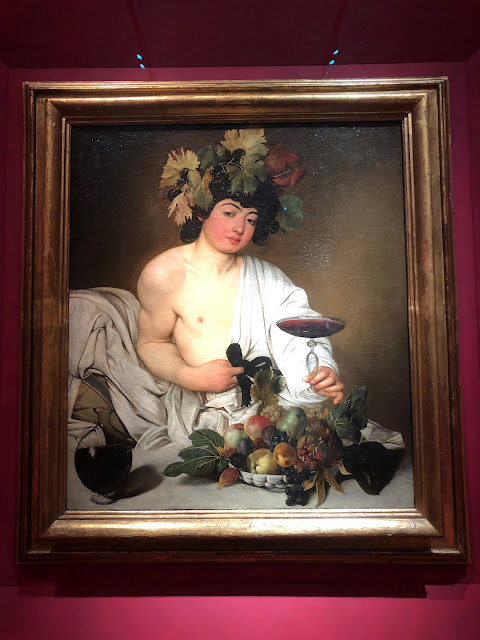【フィレンツェ】ウフィツィ美術館 カラヴァッジオとジェンティレスキ Firenze - Gallarie degli Uffizi :Caravaggio & Gentileschi
カラヴァッジオは、イタリアのバロック期を代表する画家で、ピッティ宮殿にも何点か作品が展示されていたが、このウフィツィ美術館にも3点が展示されていた。
『若きバッカス』は、1598年に描かれた作品で、バッカスに扮したカラヴァッジオ自身が描かれている。
Caravaggio was a representative painter of the Baroque period in Italy, and several works were exhibited at the Pitti Palace, but three works were also exhibited at this Uffizi Gallery.
"Young Bacchus" is a work drawn in 1598, depicting Caravaggio himself dressed as Bacchus.
『イサクの犠牲』は1603年に描かれた作品で、アブラハムが自らの息子を犠牲にしようとするシーンで、天使がその腕をつかんでアブラハムを止めようとしている。
カラヴァッジオについて、次の訪問地、ローマでたっぷりとその作品や生涯を取り上げてみたい。
"Sacrifice of Isaac" is a work drawn in 1603, in which Abraham tries to sacrifice his son, and an angel grabs his arm and tries to stop Abraham.
About Caravaggio, I would like to take up a lot of his works and life in Rome, the next place to visit.
髪の毛が蛇になっている、ギリシャ神話に登場する恐ろしい怪物メドューサ。
最後は、ペルセウスによって首を切られてしまうが、その時のメドューサを表情が描かれている。
首から勢いよく吹き出している血の表現が、カラヴァッジオらしい。
Medusa, a terrifying monster from Greek mythology, whose hair is a snake.
At the end, Perseus decapitates him, but the expression of Medusa at that time is drawn.
The expression of blood spouting from his neck seems to be Caravaggio.
カラヴァッジオの斬新でダイナミックな表現は、多くの追随者を生み出した。彼らのことを、カラヴァジェスキという。
アルテミジア・ジェンティレスキは、そのカラヴァジェスキの一人。
当時では珍しかった女性の画家で、女性である事による様々な障害に直面しながら制作を続け、近年ジェンダー研究の観点から多くの注目を浴びている。
1593年にローマで画家の家に生まれて、フィレンツェでは女性として初のアカデミー会員になっている。その後、ナポリ、ロンドンなどでも活躍して、1653年にナポリでその波乱の生涯を終えた。
『ホロフェルネスの首を斬るユディト』は、1620年頃に描かれた作品。同じテーマの作品をカラヴァッジオも描いている。
女性が男性の首を切り落とす、という作品なので、女性としてのジェンティレスキが、男性中心の当時の美術界に対する思いが、何らかの形で反映されていると考えられている。
Caravaggio's novel and dynamic expression has created many followers. They are called Caravageski.
Artemisia Gentileschi is one of the Caravageski.
She was a rare female painter at the time, and in recent years she has received a lot of attention from the perspective of her gender studies as she continued her production in the face of various obstacles to being a woman.
Born in a painter's house in Rome in 1593, she became the first woman to be a member of the Academy in Florence. She then worked in Naples, London, etc., and she ended her turbulent life in Naples in 1653.
Her "Judith Beheading Holofernes" is her work drawn around 1620. Caravaggio also draws works of the same theme.
Since it is a work in which a woman cuts off a man's neck, it is thought that Gentileski as a woman reflects somehow the feelings toward the art world at that time, which was centered on men.






コメント
コメントを投稿